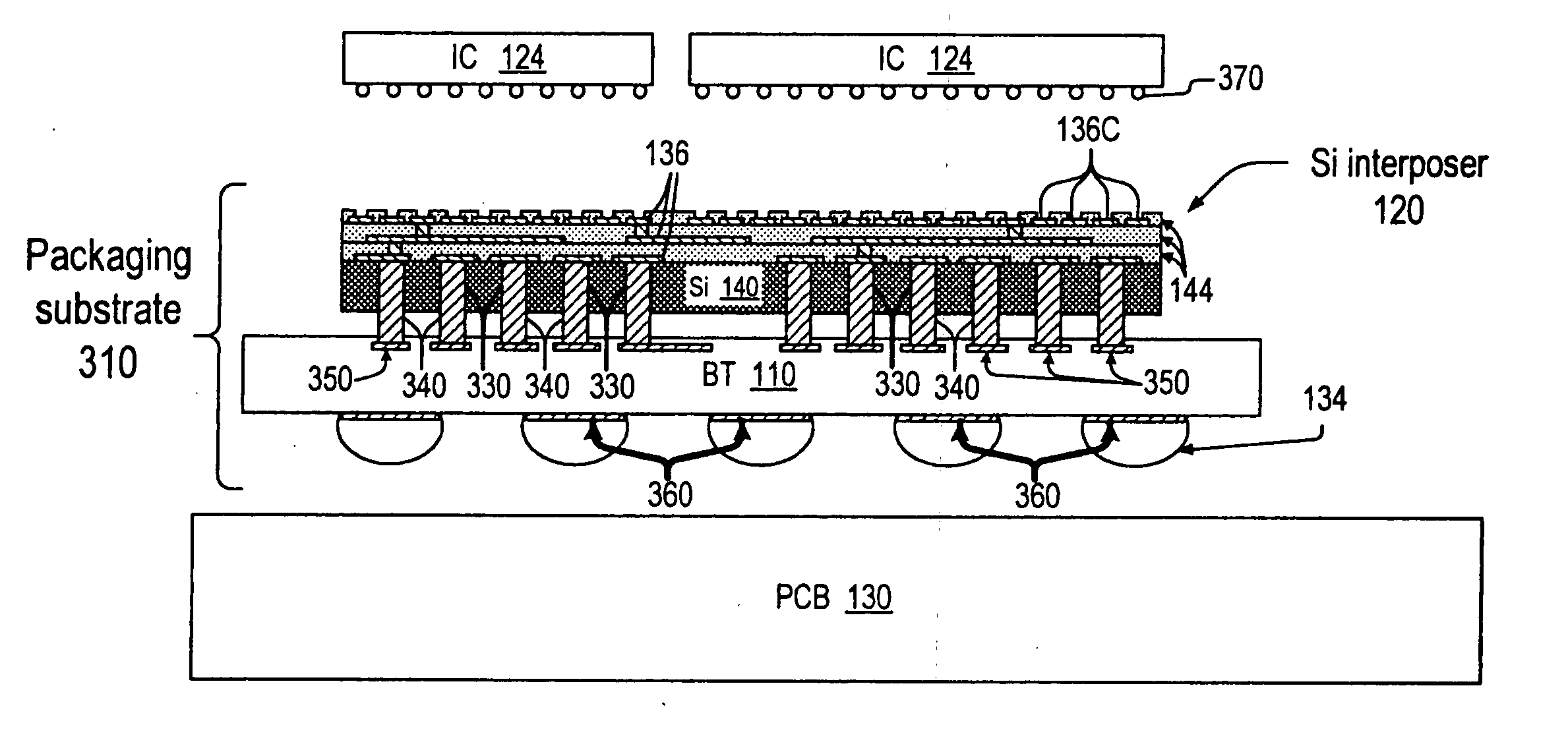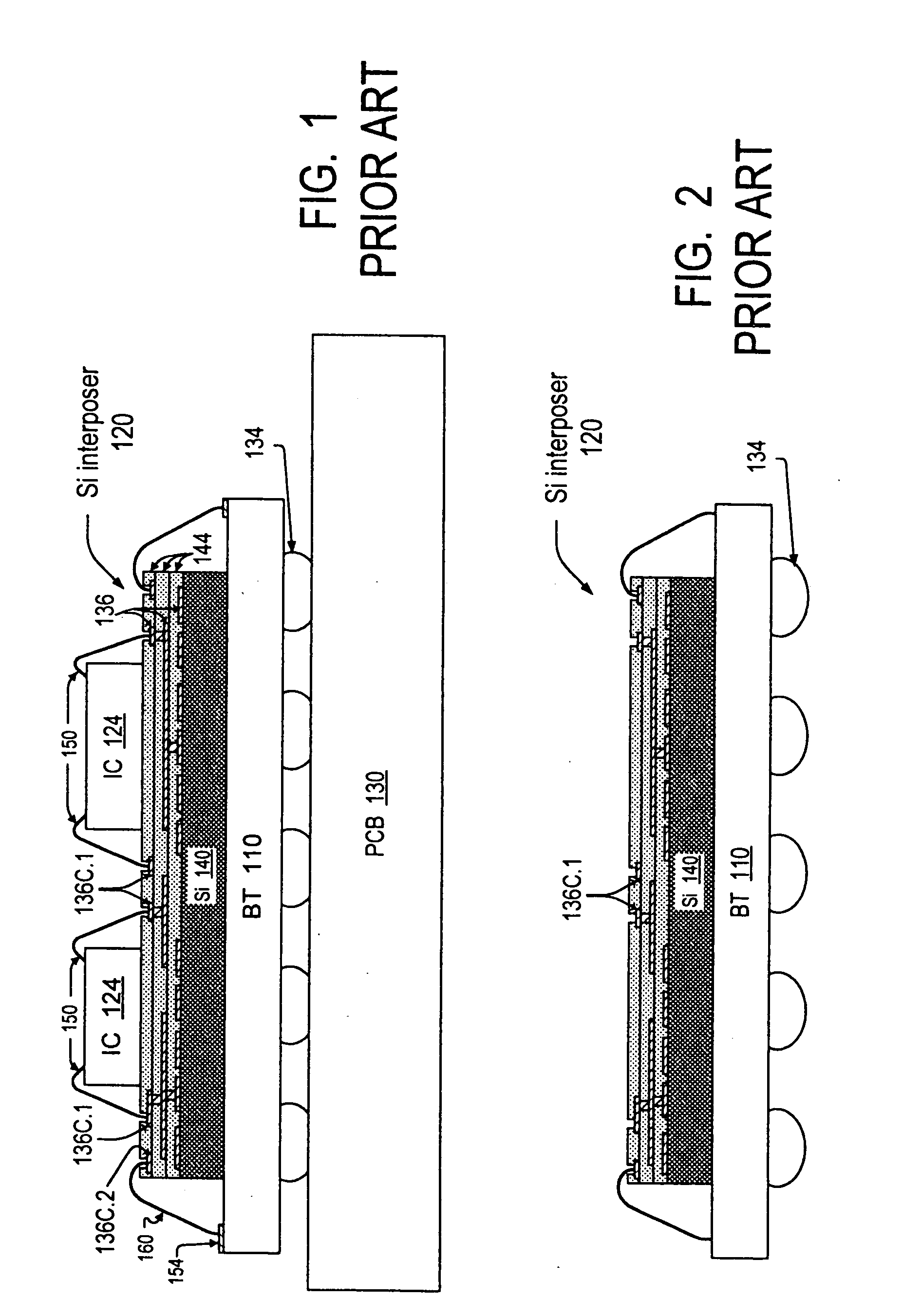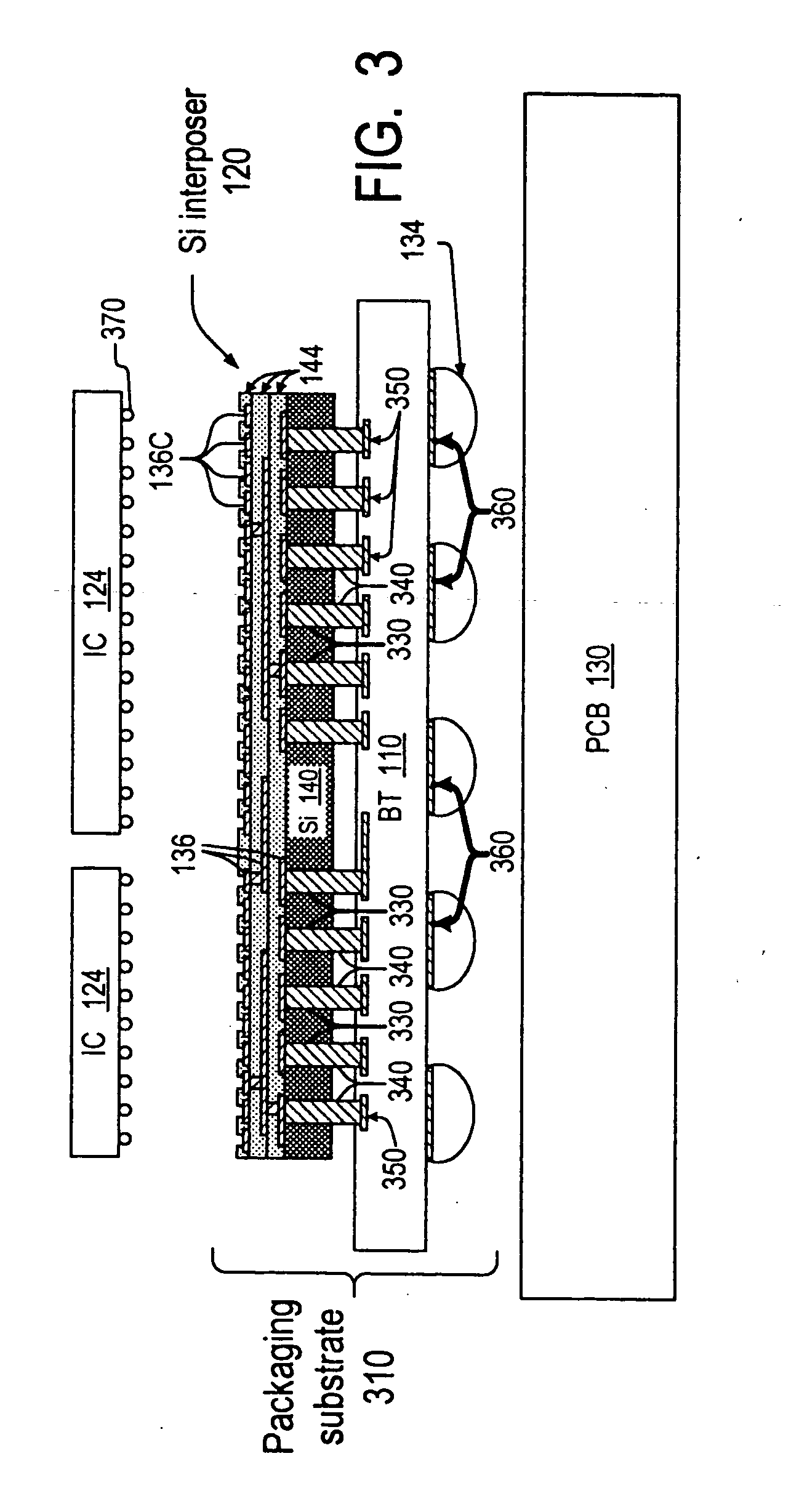Packaging substrates for integrated circuits and soldering methods
a technology of integrated circuits and substrates, which is applied in the direction of electrical equipment, semiconductor devices, semiconductor/solid-state device details, etc., can solve the problems of shortening the electrical connection, reducing the package size, and reducing the soldering efficiency of flip-chip packaging, so as to reduce the manufacturing process, simplify the solder hierarchy, and increase the melting temperature
- Summary
- Abstract
- Description
- Claims
- Application Information
AI Technical Summary
Benefits of technology
Problems solved by technology
Method used
Image
Examples
Embodiment Construction
[0024] The embodiments described in this section illustrate but do not limit the invention. The invention is not limited to particular materials, process steps, or dimensions. The invention is defined by the appended claims.
[0025]FIG. 3 illustrates an integrated circuit packaging substrate 310 having two intermediate integrated circuit packaging substrates 110, 120. Substrate 120 is a silicon interposer attached to BT substrate 110. Dies 124 and PCB 130 will be attached later.
[0026] Silicon interposer 120 includes metal layers 136 formed over silicon substrate 140. Substrate 140 has substantially planar top and bottom surfaces, and is quite thin. In some embodiments, the planarity of substrate 140 is suitable for fine geometry photolithography (finer than possible with BT and FR4 substrates). The thickness of substrate 140 can be 100 μm or less (50 μm to 35 μm thickness values believed to be achievable, and smaller values may be possible). Layers 136 provide interconnect lines and...
PUM
 Login to View More
Login to View More Abstract
Description
Claims
Application Information
 Login to View More
Login to View More - R&D
- Intellectual Property
- Life Sciences
- Materials
- Tech Scout
- Unparalleled Data Quality
- Higher Quality Content
- 60% Fewer Hallucinations
Browse by: Latest US Patents, China's latest patents, Technical Efficacy Thesaurus, Application Domain, Technology Topic, Popular Technical Reports.
© 2025 PatSnap. All rights reserved.Legal|Privacy policy|Modern Slavery Act Transparency Statement|Sitemap|About US| Contact US: help@patsnap.com



